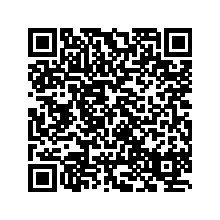Discovery at Carlson·03 Tracking Data to Help Health Officials
Tracking Data to Help Health Officials
Tuesday, November 17, 2020
When the COVID-19 pandemic broke out early this spring, three Carlson School faculty members found a distinctive way to contribute to the fight. Their weapon? Data.
The COVID-19 Hospitalization Tracking Project is a collaborative effort between the two centers within the Carlson School: the Medical Industry Leadership Institute (MILI) and the Management Information Systems Research Center (MISRC). The project collects, tracks, and publicly reports daily COVID-19 hospitalizations from all 50 states and the District of Columbia. The data has uncovered important insights that can help states and hospitals better manage infection rates and patient caseloads.

The project’s website went live on March 26, less than a week after Professor of Finance Pinar Karaca-Mandic and MILI Executive in Residence Dr. Archelle Georgiou first discussed the importance of hospitalization data for modeling the disease’s impact. “There wasn’t one unified location where we or any department of health or any modelers could grab the hospitalization data,” says Georgiou, who is also a physician. “And we decided to make that happen.”
Karaca-Mandic, who also is MILI’s academic director, brought in Carlson School colleague Soumya Sen, associate professor of information and decision studies and MISRC’s academic director. Sen would help make sure project-collected data was presented in a way that it would make it useful not only to academics but also government, the media, and the general public.
Accurate Numbers, Actionable Insights
Why hospitalizations? The number of mortalities, Sen says, “is a lagging metric. It’s an important one to track. But what really matters from a decision-making perspective is the current state. How many people are actually hospitalized? And what is the impact on the hospital system as a result?”
Part of the challenge in obtaining hospitalization numbers, Karaca-Mandic notes, is that “the states varied widely on how they defined their data.” Case in point: Some states don’t separate suspected and confirmed cases. In order to get useful and verified numbers, project team members have contacted state officials, academics, and even local media. Another challenge involved adding important new information. For instance, some states have begun reporting hospitalizations by age, gender, and racial and ethnic background. “It’s still not ideal,” Karaca- Mandic says of the data collection process. “But we’ve gotten comfortable with quickly seeing and tracking possible changes” in how states report their data. Despite these challenges, the data has been sufficiently useful for the team to glean crucial insights. Members of the Hospitalization Project have published several papers discussing their findings:
- In May, a paper in JAMA looked at the association of stay-at-home orders with COVID-19 hospitalizations. Project data showed that 12 days after four states issued stay-at-home orders, infection trends declined, suggesting those orders had been effective.
- In August, the three project principals published a study in JAMA Internal Medicine that revealed a much higher prevalence of COVID-19 among racial and ethnic minorities than in the population as a whole.
- Also, in August, a study in the Journal of General Internal Medicine examined the association of daily ICU and non-ICU use by COVID-19 patients on overall COVID-19 mortality. Early Centers for Disease Control and Prevention (CDC) data suggested that for every additional seven hospitalized patients not in ICU, there were about 0.5 additional deaths over the next seven days. The Hospitalization Project’s research, based on a larger dataset, found that the impact on the total number of COVID-19 deaths is likely higher.
More papers based on project data analysis are in the pipeline, including looking at disparate impact by age groups, rural areas, and examining multiple policy levers such as re-opening of state economies.
The Business Case for Medical Data
So why has a business school tackled a project that might seem better suited to public health or medical school scholars?“Healthcare is an interdisciplinary field,” Karaca-Mandic notes, and one of those disciplines is business management. The hospitalization project is “100 percent aligned” with MILI’s mission to help shape the future of the medical industry: “We identified a major data gap. This is important for policy making and for any decisions that the public health level tries to address.”
From Sen’s perspective, the project’s data work fits MISRC’s educational focus on data science and data analytics. He notes that organizations of all kinds have discovered that turning digital data into actionable insights can improve processes, anticipate future needs, and much more. “The project's data-driven approach,” Sen adds, “is widely applicable to many other organizational contexts.”
追踪数据,助力医疗
2020年早春新冠疫情爆发之时,卡尔森学院的三位教师开发了抗击疫情的新方法。他们的武器是什么?数据。新冠住院数据跟踪项目是卡尔森学院的内部合作项目,由Medical Industry Leadership Institute (MILI)和Management Information Systems Research Center (MISRC)两大中心共同执行。该项目收集、跟踪并每日公布50个州和哥伦比亚特区的新冠住院数据。通过这些数据揭示的洞察,有助于各州和医院更好地控制感染率、减少病例数量。该项目的网站在2020年3月26日上线,距离金融学教授Pinar Karaca-Mandic和Archelle Georgiou教授(MILI Executive in Residence)首次强调住院数据对于模拟疫情影响的重要性不到一周。Georgiou教授也是一位医师,她表示:“当时我们、其他健康部门、建模人员等无法通过统一的信息渠道获得住院信息。所以,我们决定自己做。”Karaca-Mandic是MILI的学术主任,她介绍卡尔森学院的同事Soumya Sen参与该项目,后者是信息与决策研究学教授、MISRC的学术主任。在项目中,他负责数据的呈现,确保数据不仅对学者有用,同时也对政府、媒体和公众有帮助。
数据准确,洞察可执行为什么选择住院数据?Sen表示,死亡人数指标“具有滞后性。虽然该指标也是重要的追踪指标,但是真正影响决策的是当前的情况。有多少人实际在住院?对于医疗系统有怎样的影响?”Karaca-Mandic表示,收集住院数据的一大困难是“各州定义数据的标准很不一样”。例如:一些州不区分疑似病例和确诊病例。为了获得有用的、经核实的数据,项目组成员曾经联络州政府工作人员、学者、甚至当地媒体。另一个困难是如何加入重要的新信息。例如,一些州开始根据年龄、性别、种族和民族信息来通报住院人员信息。Karaca-Mandic表示,目前的数据收集流程“还不甚理想,但我们已经适应了快速发现和跟踪”各州政府披露方式的变化。虽然面临种种困难,但该项目组已经通过数据发现一些重要的洞察。项目组成员发表了多篇论文,披露他们的成果:
2020年5月,一篇JAMA论文讨论了居家令与新冠患者住院人数之间的关系。项目数据显示,四个州的感染率在颁布居家令的12天之后下降了,这说明居家令是有效的。
2020年8月,三位项目负责人在JAMA Internal Medicine发表论文,表示少数族裔人群中新冠肺炎患病率远高于整体人群。
2020年8月Journal of General Internal Medicine的一篇论文研究了是否使用ICU对新冠患者死亡率的影响。美国疾病防治中心(CDC)早前的数据表示,每增加7名不使用ICU的住院病患,就会在未来7日中增加0.5例死亡。但是本项目收集了更多数据,发现因此造成的新冠死亡病例数量可能更大。
目前有多篇基于该项目的数据分析的论文正在准备发表,包括研究年龄组和农村地区的差别性影响、研究重启州经济等政策杠杆的论文。
医疗数据的商业用例
为什么这家商学院要组织这样一个仿佛更适合公共卫生专家或医学院的项目呢?
“医疗是一个跨学科的领域”,Karaca-Mandic表示,工商管理就是其中一环。该项目与MILI协助重塑医疗行业未来的使命“100%契合”。“我们发现了一个重大的数据缺口。这对于公共健康行业的政策制定和决策都是非常重要的。”
Sen认为,该项目的数据工作符合MISRC侧重数据科学和数据分析学的教学重点。他表示,各类组织都发现,通过将数字化数据转化为可执行的洞察,可以优化流程、预测未来的需求等。Sen进一步强调:“该项目以数据驱动的工作方式,广泛适用于其他各类组织。”



